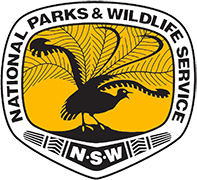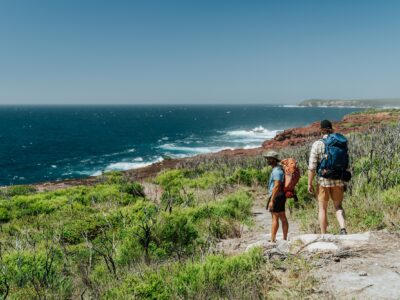For tens of thousands of years, humans have been captivated by the wonders of the cosmos. And it’s easy to see why; there’s nothing quite like the feeling you get from staring out at a sea of twinkling stars set against an ink-black sky.
Australia’s vast expanses and comparatively low population mean we are lucky to have some of the most magnificent night skies in the southern hemisphere. Aboriginal and Torres Strait Islander peoples have known this for centuries, and have been described as the world’s first astronomers.
With so many protected nature pockets in New South Wales, there’s a perfect stargazing spot for everyone, but the very best rewards can be found in places that require a little more effort to get to.
Before you set off, there are a few things you can do to make your next stargazing experience truly astronomical:
Plan your time and place

Stargazing goals.
Yuraygir National Park
Lisa Russo/DCCEEW
Firstly, you’ll need somewhere with minimal light pollution and clear access to the night sky. Hot tip: NSW’s remote national parks are a great place to start.
Timing is also important – you can stargaze at any time of the year, but the sky is especially impressive on clear, cooler nights, so be prepared to rug up before you look up. Stepping out in winter comes with the added bonus of earlier sunsets too, giving you more time to explore the cosmos. For maximum star power, try to plan your stargazing adventure at least a week either side of the full moon.
Ranger’s tip: Camping is a fun way to discover the beauty of our national parks. Follow these safety tips to keep you and your camping group safe.
Know what to look for

Tonight's entertainment: that incredible view.
Warrumbungle National Park
Rob Mulally/DCCEEW
Popular stops on a celestial tour of the southern sky include the planets Mars, Jupiter and Venus, the Southern Cross and our very own galaxy, the Milky Way.
Did you know? When you wish upon the first star of the night, you may actually be wishing on a planet. Venus, one of the brightest objects in the night sky, can often be seen most clearly around sunset. Jupiter is also visible to the naked eye – look out for a bright, silvery star that doesn’t appear to be ‘twinkling’.
Other familiar icons include Orion’s Belt – best seen from January to March – and the Pleiades constellation, which is associated with the Aboriginal Star Dreaming story of the Seven Sisters.
View this post on Instagram
One of our favourites is the Celestial Emu, a well-known Aboriginal astronomical constellation which is outlined by dark areas of the night sky, rather than the stars. To find it, you’ll need to navigate your way to the Coalsack Nebula, visible as a dark patch covering part of the Milky Way to the left of the Southern Cross.
There are also a few events each year that will increase your odds of being able to wish upon a shooting star. The Eta Aquariid shower can be seen in the southern hemisphere each May, as Earth moves through a trail of dust and gas left by Halley’s Comet.
Assemble your gear
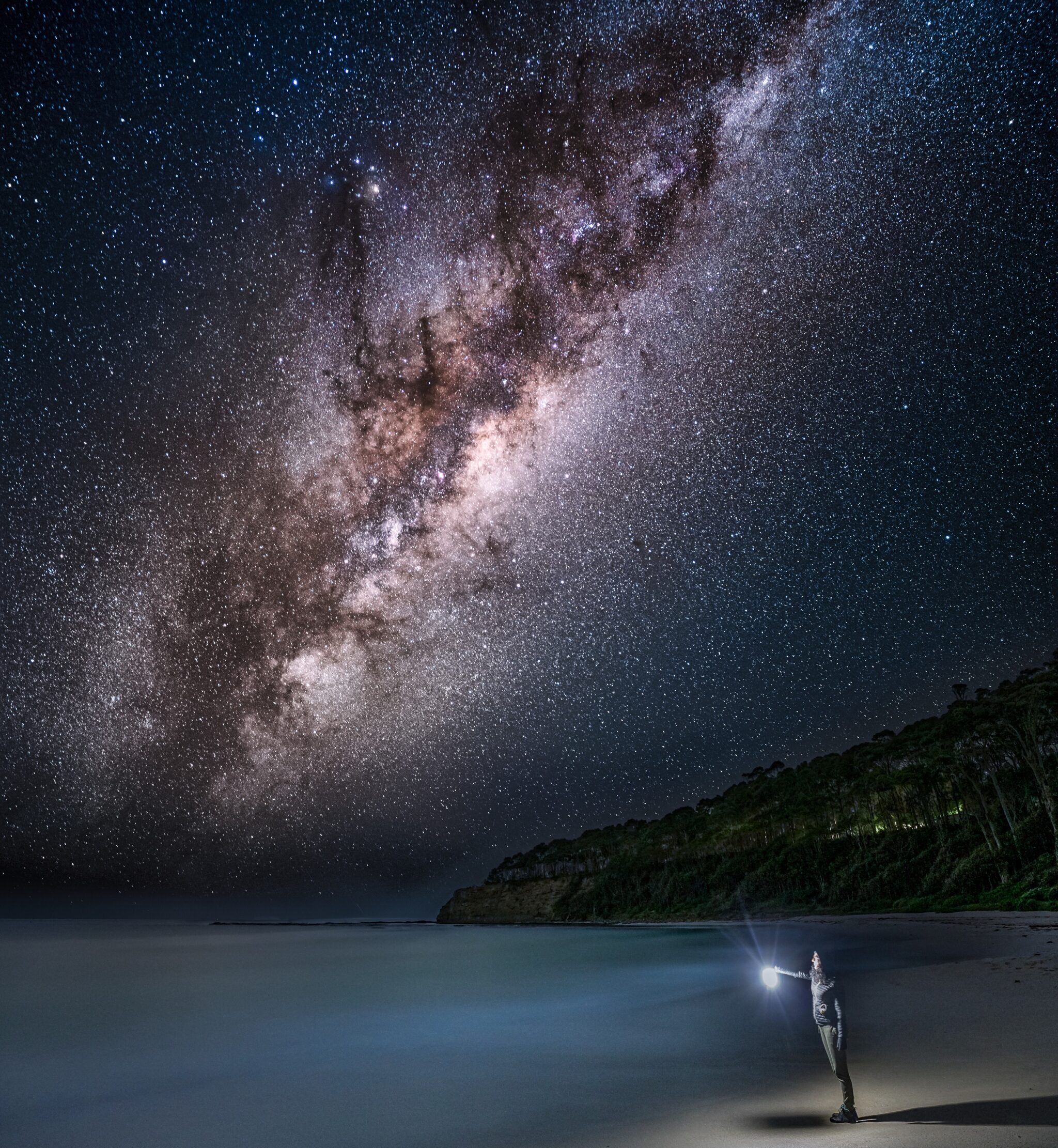
Under the Milky Way.
Murramarang National Park
Grant Reynolds/DCCEEW
While a telescope or even a pair of binoculars can really up your stargazing game, there’s still plenty that can be seen with the naked eye.
There are also a plethora of star maps and apps that will help you navigate the sky, such as NASA app, SkyView Lite and Night Sky. Note that some of these apps may not work without mobile reception, so just in case, be sure to pick a few key things to look for before you go.
Other essentials include comfy reclining chairs or a picnic blanket, camping gear and warm clothing.
Ranger’s tip: If you’re heading to an outback park, stay safe with these tips.
Now that you’re all set, here are our top eight places to stargaze.
-
1/8
Barrington Tops National Park
View this post on InstagramA starlit adventure awaits in the sub-alpine, walk-in campsite at Wombat Creek in Barrington Tops National Park. Only accessed by walking track, you can choose to enter via the challenging Corker trail, or the more leisurely path via Careys Peak lookout. Either way, this rustic camping spot makes a great base to explore the constellations. With 19 walks through World Heritage-listed Gondwana Rainforest and seven waterfalls to choose from, there’s plenty to explore during the day too.
If 4×4 is more your thing, head for Gummi Falls, high in the remote wilderness of the Barrington Tops State Conservation area. The 4WD access trails are only open from October to May, and for the rest of the year this campground is only accessible by walking or cycling (3km one-way).
Want more Barrington Tops? Explore more of the Ancient Gondwana Rainforests here.
DownloadNSW National Parks appDownload your next adventure -
2/8
Blue Mountains National Park
View this post on InstagramJust over an hours’ drive out of Sydney, you’ll find yourself in the heart of Blue Mountains National Park. There is plenty on offer here in the way of celestial delights – you can even book your own stargazing tour at Wentworth Falls. With a professional computerised telescope, astronomy binoculars and laser-guided constellation storytelling, this 90-minute tour is sure to leave you in awe. And did we mention there’s complimentary hot chocolate?
Stay at the Kedumba River Crossing campground in the Katoomba area, Dunphys campground in the Southern Blue Mountains, or the remote Galong cabins. Better yet, make a weekend of it and experience all the highlights of the Blue Mountains at once by hiking the 19km Grand Cliff Top Walk.
DownloadNSW National Parks appDownload your next adventure -
3/8
Kalyarr National Park
 Photo Information
Photo InformationKalyarr National Park
Mal Carnegie/DCCEEW
One of the flattest places on Earth, home to the vast open landscape of the Hay Plains, Kalyarr National Park is one of the best places to catch the Milky Way galaxy in all its glory. The park is located west of the Riverina town of Hay, and it’s definitely worth the drive.
Pitch your tent or swag at the Lachlan River campground, a small, secluded spot amongst the red gums. After a colourful Hay Plains sunset, kick back, turn off your head torch and send your view skyward. When the sun returns, the wildlife spotting begins – take a walk around Lake Ita and look out for kangaroos, emus, wedge-tailed eagles and shingleback lizards.
Ranger’s tip: We love our national parks. Please make sure you leave them as you found them. How to leave no trace.
DownloadNSW National Parks appDownload your next adventure -
4/8
Kosciuszko National Park
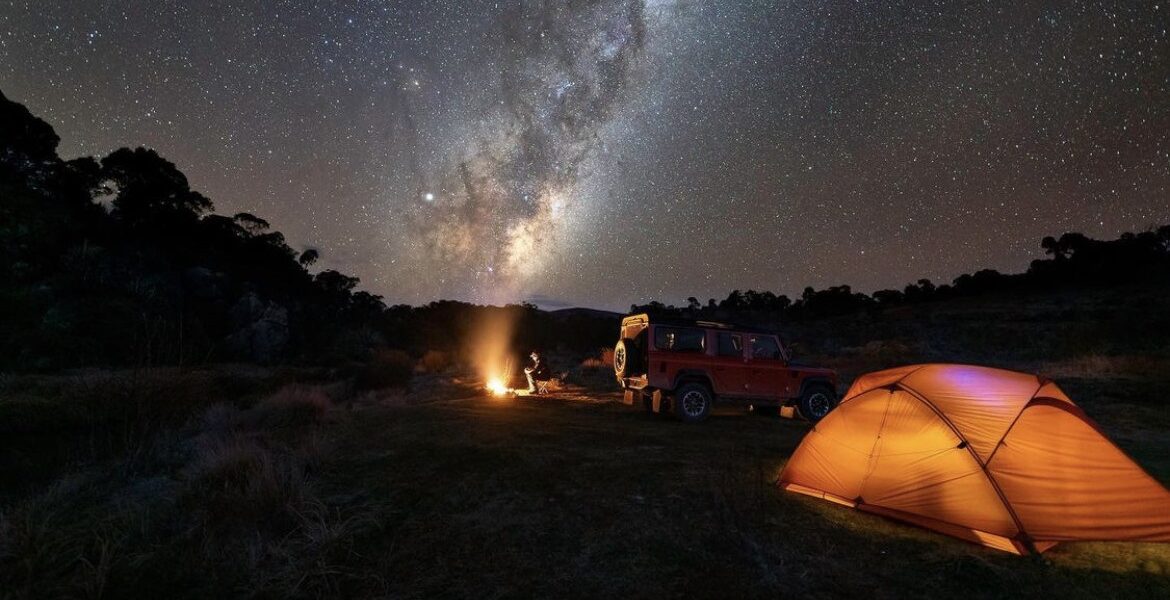 Photo Information
Photo InformationKosciuszko National Park
Ryan Heldoorn/DCCEEW
Higher altitude can make for a clearer stargazing experience, which might be why the night sky in Kosciuszko National Park is so vivid. Camp under the stars at the Island Bend campground, a 25 minute drive from Jindabyne, or stargaze from the comfort of the deck of Numbananga Lodge at Smiggin Holes, knowing a hot shower and cosy beds are just a few metres away. This exclusive self-contained lodge is also the perfect place to retreat to after a day exploring Australia’s high country and offers easy access to both snow sports in winter and alpine adventures in summer.
If you’re really up for a challenge, hike Mount Kosciuszko, mainland Australia’s tallest mountain, from Thredbo (4 to 5 hours return) or Charlotte Pass (6 to 8 hours return).
DownloadNSW National Parks appDownload your next adventure -
5/8
Mungo National Park
View this post on InstagramHave time to expand your itinerary? Combine your stargazing exploits with an outback adventure on a five day outback tour with Desert Sky Tours. Starting in Adelaide, these 4WD tours take travellers on the open road to the remote World Heritage-listed Mungo National Park. They also include an overnight stay, so you can watch the first stars flicker into view as the sun sets and the desert descends into darkness.
This remote national park is just under two hours from Mildura. If you make your own way there, take a tour with an NPWS Aboriginal guide to learn about the area’s rich cultural history before settling in for a night under the desert night sky at the park’s unique heritage accommodation, Mungo Shearers’ Quarters.
DownloadNSW National Parks appDownload your next adventure -
6/8
Mutawintji National Park
 Photo Information
Photo InformationMutawintji National Park
Cameron Luck/DCCEEW
Just over 1.5 hours north-east of Broken Hill, Mutawintji National Park has all you need for a true outback adventure; a land of red dirt and clear skies, rich in Aboriginal history. Homestead Creek campground, the only one in the park, will be your base. Set up your tent, swag, caravan or motorhome among the towering river red gums, take in the fresh outback air and get ready for a spectacular celestial showing come nightfall.
Don’t miss out on a visit to Mutawintji Historical Site, which features traditional rock engravings and ochre stencils depicting the stories of Aboriginal history in this region. Listen to Aboriginal guides as they share these stories and their connection to Country on a Mutawintji cultural tour. Tours run daily, and bookings are required.
DownloadNSW National Parks appDownload your next adventure -
7/8
Warrumbungle National Park
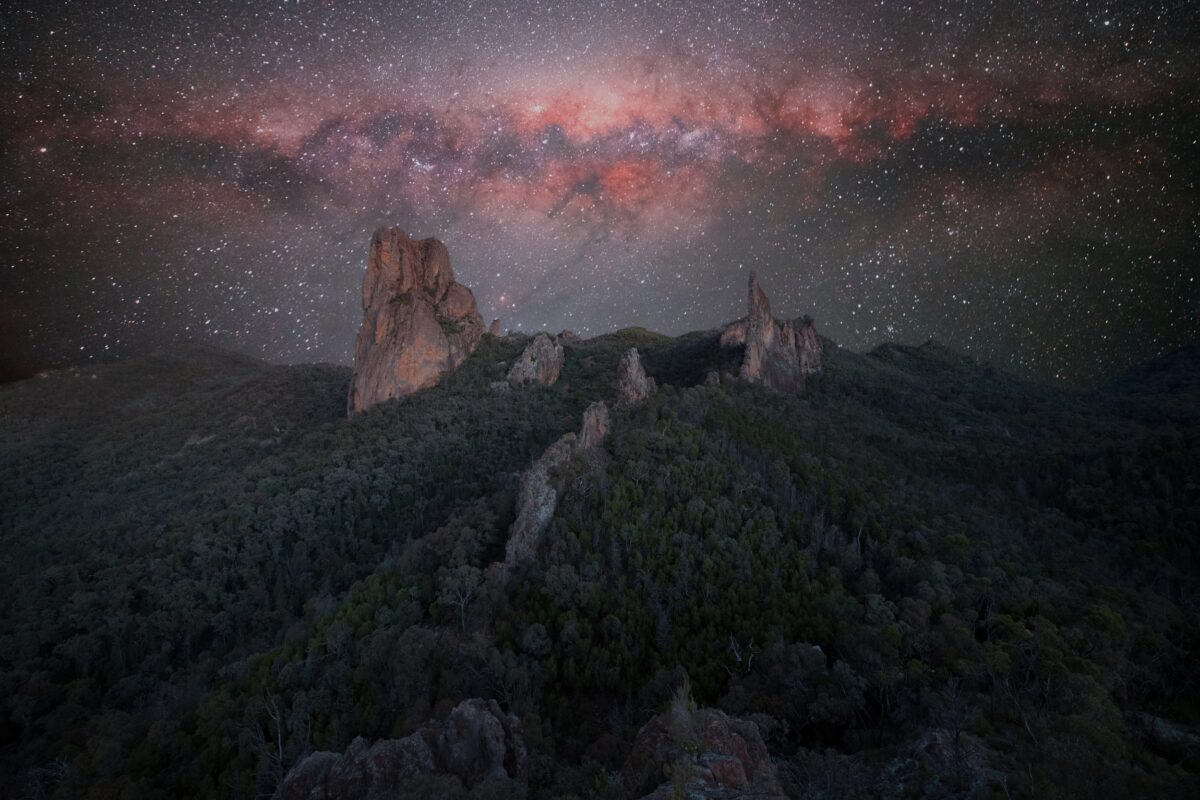 Photo Information
Photo InformationWarrumbungle National Park
Ben Heaton/DCCEEW
We’ve saved the best for (second) last. Home to Australia’s first International Dark Sky Park, the Warrumbungles has zero light pollution, officially making this the perfect spot for the amateur astronomer or star lover to explore the cosmos. The vibrant twinkling sky also provides a beautiful backdrop to the silhouettes of the park’s dramatic volcanic mountain landscapes. Understandably, stargazing is one of the most popular things to do here on a clear night.
You can stay at 11 different campgrounds in the park, but our top pick is Camp Blackman. With plenty of room to move, hot showers and designated fire pits, you can set your camp up and be ready for hours of epic stargazing in no time. Make sure you turn off your own camp’s lights before you do!
Did you know? Our International Dark Sky Parks are pretty special places. Learn more about them and what you can do to help preserve them.
DownloadNSW National Parks appDownload your next adventure -
8/8
Yuraygir National Park
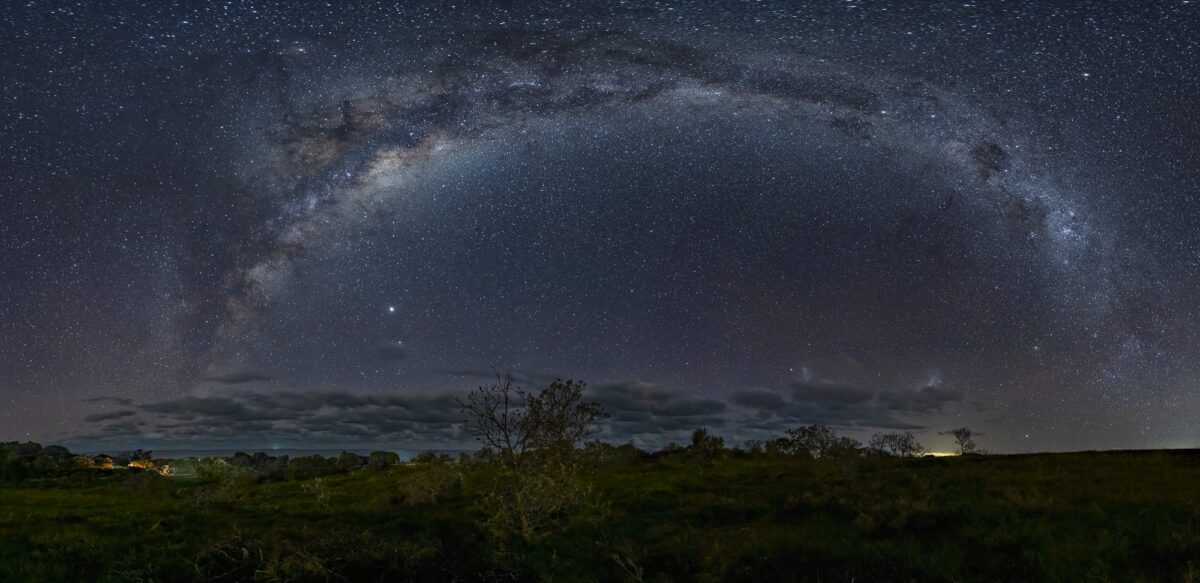 Photo Information
Photo InformationYuraygir National Park
Neil Vincent/DCCEEW
Camping under the starriest of skies, and dozing off to the sound of waves crashing on the beach nearby – how good does that sound? Pack up your hiking bag and make a beeline for the Shelley Head campground. The only catch is you have to be prepared for a hike in! Located 1.5 hours north of Coffs Harbour in Yuraygir National Park, this walk-in site is small (there are only ten unmarked sites) but well worth the hike – especially after the sun sets. You can walk into Shelley Head from either Mara Creek (4.8km walk one-way) or Lake Arragan (7km one-way).
DownloadNSW National Parks appDownload your next adventure
So, what are you waiting for? Use stargazing as the catalyst for your next adventure, and remember that wherever you go, NSW’s national parks are excellent places to start.
